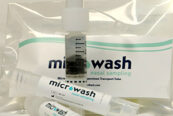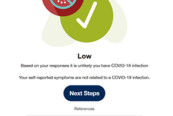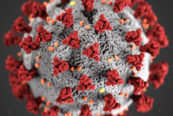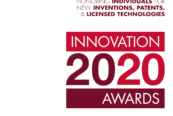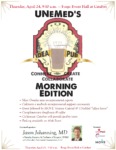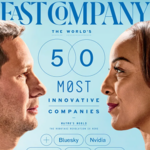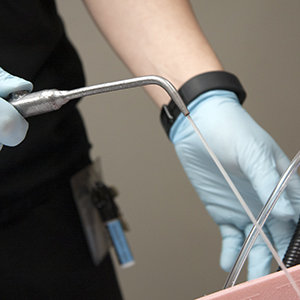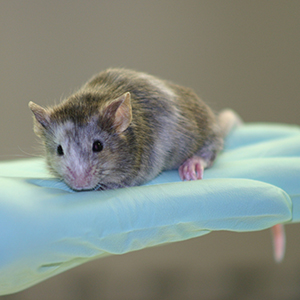*UPDATED 7/29/20: New invention numbers updated to reflect final data for the fiscal year ending in 2020.
by Charlie Litton, UNeMed | May 26, 2020
I remember clearly the moment when I realized I’d be working from home for an extended period.
My big concern at the time—which seems preposterously silly now—was that I was about to be desperate for things to do. I needed to dream up ways to keep myself occupied for what was beginning to look like a pandemic.
I sure wasn’t going to have a lot of office work to do. That much was certain.
I went around the house, writing up a list of small projects suitable for my level of (in)competence.
I worried that it was a short list. Maybe I could take up gardening? Learn the mystic arts of the magical force that powers lights and TVs and other gizmos. Some people call electricity witchcraft, and those people are correct.
The truth is, I’ve been as busy at work as I’ve ever been…even if that work looks a lot like a modest dining room…now scattered with an ENTIRE BOX of crispy rice cereal that my kid just dumped all over the floor!
Oh, the humanity!
ANYWAY…I know why my wide-eyed home project list now lays forgotten somewhere, probably buried under a pile of poorly crayoned first-grade worksheets.
It’s the University of Nebraska’s fault. Specifically, the researchers, clinicians and all the other folks around here who have been feverishly thinking of better ways to do things amid this pandemic. We’re up to our eyeballs in new inventions, and there seems no end in sight.
Just look at the numbers: In the third fiscal quarter that ended on March 31, we had 34 new inventions, which was then the third-best quarter in our history. I will detail a few of those innovations in a minute.
But if you look at the final 13 weeks of the fiscal calendar, inventors submitted 39 new inventions. That is the second-most prolific quarter in UNMC and UNO history (The 42 new inventions in 2018’s third quarter is the most.)
But the pandemic doesn’t neatly fit into our fairly arbitrary quarterly brackets. If the pandemic were the measuring stick, then in the 13 weeks beginning with the start of lock-down in mid-March, we counted a whopping 49 new inventions.
That is an unprecedented amount of innovation at UNMC and UNO during a time when everyone is supposed to be sitting at home, power-streaming Stranger Things and baking sourdough bread.
I think it’s safe to say that this is likely the most innovative stretch of 13 weeks in Nebraska history.
In fact, in our entire history, we’ve landed 30 or more inventions in a single quarter only five other times.
So, as I update this post eight months later, I still haven’t looked anyone from our office directly in the eye for more than 130 days, but they too are apparently not lacking for things to do.
This gangbuster innovative productivity is probably the most heartening thing I can take away from our circumstances. We now know with clear-eyed certainty that the brightest bulbs in our state—physicians, academic researchers, nurses, and others—are pouring themselves into finding solutions to the single-biggest problem of our time. And I can also say with maximum confidence that the same can probably be said about every other biomedical academic and clinical institution like ours.
What we see happening in our small corner of the universe amounts to 30 new inventions—in the last five months—that are directly related to fighting the pandemic. Yet that is but a small illustration of what is happening everywhere, and we should all take heart that some of the smartest people in the world are giving COVID-19 their undivided attention.
That is just awesome—in the truest sense of the word’s primary definition.
Here’s a closer look at a handful of some of the innovations Nebraska inventors have been churning out in response to this pandemic, in no particular order (This list doesn’t even include the more than 50 drug development and ongoing research discovery projects.):
- Intubation Shield: Placing a tube in infected patients to help them breathe has become a high-risk procedure for healthcare workers. The intubation shield is a simple, cost-effective design that can be easily cleaned, stored and moved from room-to-room, unlike other intubation boxes which are bulky and heavy.
- Infectious aerosol capture mask and filter housing: The mask and filter housing are a great example of innovation through improvisation, the mask and filter were cobbled together largely with repurposed parts. The result is a new device for patients who need oxygen but might not be symptomatic. The Air Force tested the device for use on their flights transporting COVID-19 patients. They liked it well enough to order 4,000 units.
- Magnetic face shield: Developed by Nebraska Medicine and UNMC emergency staff, the magnetic face shield is a clever design that makes easier (and safer) the donning and doffing of personal protective equipment for hospital staff.
- 3D printed nasal swabs: It seems unbelievable that there are shortages of the kind of cotton swabs clinicians use to take nasal samples for various tests. It’s also remarkable that a 3D-printed version can both be safer and more comfortable for the patient.
- UV cleaning method: UNMC researchers and Nebraska Medicine clinicians developed a process for sanitizing single-use personal protective equipment. The process enables things like masks and face shields to be used more than once, easing the strain of rising shortages during the pandemic.
- Remdesivir trial: The first clinical trial launched in the United States to evaluate an experimental treatment for COVID-19 began at UNMC with an American who was quarantined on the Diamond Princess cruise ship that docked in Yokohama, Japan. Andre Kalil, M.D., a physician and researcher at UNMC, led the trial.
- COVID-19 triage app: A new mobile app, 1-Check COVID, helps guide the screening of large groups of individuals concerned that they might have COVID-19 and helps first responders and other health care providers determine a person’s likelihood of carrying the disease.
Final point: There are even more on the way, and you can find them here when they become available for licensing or as products on the market.

